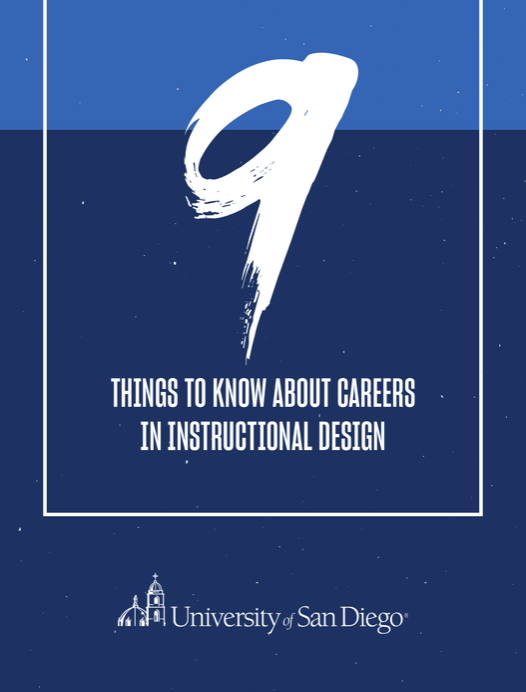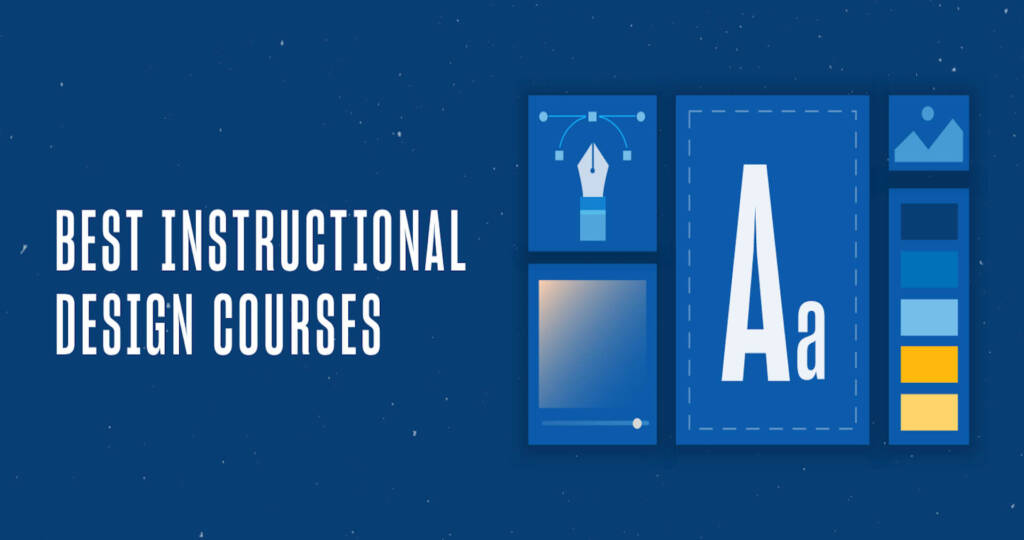The field of instructional design (ID) is thriving. This dynamic profession combines theory, creativity, and technology, empowering individuals to achieve their goals through innovative learning experiences.
According to Judith Christian-Carter, Director of Effective Learning Solutions (ELS) Ltd. and vice chairman of the British Institute for Learning and Development (BILD), “Instructional designers are architects of learning because they know what it’s all about, when it’s needed, how to provide it and, above all, how to make it effective.” As the demand for instructional designers rises across sectors, many professionals are considering ways to elevate their career trajectories and expand their impact.
Earning a master’s in instructional design stands out as a strategic pathway toward achieving this goal. An advanced degree not only provides a deeper understanding of the field but also equips professionals with a competitive edge in the evolving landscape of education and training.
Why Obtain a Master’s Degree in Instructional Design?
Earning a master’s degree in instructional design can significantly impact your professional future. Not only does it open doors to a multitude of career opportunities, but it also sets you on a path toward a higher income bracket. Let’s delve deeper into why this degree holds significant weight in the field of instructional and learning design:
- Career Opportunities: A master’s degree in ID can lead to a variety of exciting roles. From becoming an eLearning developer to a curriculum designer, the professional avenues are vast and varied.
- Elevated Salary Potential: Instructional designers with a master’s degree often earn above-average salaries, adding a financial advantage to the numerous professional benefits.
- Professional Demand: Instructional designers are in high demand across various sectors. According to Zippia, the job growth outlook for instructional designers is projected to increase by 7% over the next five years, signaling promising career prospects.
- Career Progression: Possessing a master’s degree can fast-track your career growth, propelling you into senior roles at a quicker pace.
6 Questions to Ask Yourself Before Comparing Instructional Design Degrees
Pursuing a master’s program in instructional design requires careful thought and self-reflection. Here are some critical questions to consider:
- Career Goals and Passion for Learning: What are your ultimate career goals in the field of instructional design? Do you see yourself creating innovative learning programs or leading technological transformation in an educational institution? A passion for lifelong learning is integral in this ever-evolving field, so it’s important to consider how committed you are to staying on top of new developments.
- Aspired Role in Instruction or Training: What specific role attracts you the most? Perhaps you’re drawn to designing instructional material, or maybe overseeing the implementation of a learning management system is more up your alley. Identifying your preferred niche can help you choose the right master’s program.
- Preferred Work Environment: Consider where you envision yourself working. Would you thrive in an academic setting, helping educators develop effective teaching strategies? Or does the dynamic nature of the corporate world, with opportunities to design comprehensive training programs, appeal more to you? Your preference could influence the type of ID program you should pursue.
- Necessary Skills and Experiences: What core skills can help you meet your career objectives? Instructional design is a multifaceted field, requiring competencies ranging from project management to technical proficiency in learning platforms. It’s also beneficial to consider the kind of practical experience that would serve you best.
- Expected Salary Range: It’s practical to think about the salary range you’d be comfortable with. Salaries in instructional design can vary widely depending on the industry, the level of expertise and geographical location, among other factors.
- Value of a Master’s Degree: Reflect on how a master’s degree will bolster your career. Advanced education in ID will enhance your professional credibility, expand your knowledge base and offer opportunities for specialized learning.
What Are the Different Instructional Design Degree Programs?
Instructional design programs vary, each with a unique emphasis:
- M.Ed. programs: Designed for educators and administrators, Master of Education degrees offer practical, field-based experience, emphasizing the teaching and learning process.
- M.A. programs: Master of Arts programs focus on understanding foundational theories of learning. They often require a capstone project, which could be a creative project, an internship or a practicum.
- M.S. programs: Similar to an M.A., Master of Science programs also focus on foundational learning theories but include a technical mastery of tools and may require a thesis or capstone project.
What Are the Different Instructional Design Program Focuses?
When considering a master’s degree in instructional design, knowing the variety of program focuses available is essential to your decision-making. Here are a few areas in which you can focus:
- Instructional Design: Instructional designers design instructional solutions based on identified learning needs. They apply established learning theories and instructional strategies to solve problems associated with gaps in knowledge and skills.
- Learning Design: Learning design practitioners view learning as a holistic experience, considering factors such as learners’ preferences, motivations and environmental influences. This approach emphasizes human-centered learning, intertwining elements of instructional design with design thinking principles.
- eLearning Design: eLearning developers utilize various technologies and platforms to produce online courses, training programs and digital instructional content embedded in the online learning experience. This focus is becoming increasingly relevant as more educational institutions and businesses shift toward online and remote learning formats.
- Curriculum Design: Curriculum designers develop the scope and sequence of a learning experience. They work on crafting comprehensive instructional plans covering essential content for a course or training program, including deciding what to teach, when to teach and how to evaluate learner progress.
7 Criteria to Consider when Selecting a Master’s in ID Program
Choosing a master’s program in instructional design is guided by various factors. From the course content to the faculty’s expertise, here are criteria to consider as you compare and contrast your options:
- Areas of Study: Assess whether the program’s focus areas align with your career aspirations. Consider the balance between practical and theoretical aspects. Does the program delve into topics that you’re interested in? Will it provide valuable knowledge and skills for your desired career path?
- Curriculum: Review the curriculum comprehensively. Does it offer a blend of practical classes that provide hands-on experience and theoretical ones that explore fundamental principles and ideas? Also, consider the credit requirements: How many units or courses will it take to obtain the degree?
- Orientation and Student Support: Evaluate how the institution supports its new and continuing students. Do they provide a comprehensive Orientation that clearly explains the course structure, class requirements and other important details? Does the institution offer ongoing support throughout your studies, like academic advising and other student support services?
- Schedule and Flexibility: Is the program delivered online, in-person or through a hybrid model? Consider how classes can fit into your existing schedule. Some programs may also offer part-time or accelerated options to cater to students’ different needs.
- Faculty: Look into the qualifications and industry experience of the faculty. Experienced faculty members can provide invaluable insights and real-world perspectives. It’s also essential to know how accessible they are — will you have opportunities to receive one-on-one mentoring or guidance?
- Quality of Education: Verify whether the school is accredited, which ensures it meets certain educational standards. Check if the school provides additional resources and study aids like libraries, labs or online resources to supplement your learning.
- Costs: Lastly, consider the financial implications. What does the tuition cover? Are there additional costs, like textbooks or technology? Consider the overall return on investment, including potential salary increases or expanded job opportunities post-graduation.
Tips and Resources for Exploring ID Programs
As you dive into the world of instructional design and explore the various master’s programs, it’s helpful to have some trusty resources to aid your research and decision-making process. Here are some prominent resources you might find beneficial:
- The Learning Guild: This is a community of practice for those in the learning industry that offers valuable resources and networking opportunities. Membership provides access to reports, webinars and events that can deepen your understanding of instructional design.
- The Chronicle of Higher Education: A leading higher education news source, The Chronicle offers informative articles on many relevant topics, including instructional design. This can help you keep up to date with trends, challenges and opportunities in the field.
- FAFSA (Free Application for Federal Student Aid): The cost of a graduate degree can be a significant consideration. FAFSA is a U.S. government program that provides financial aid to qualifying students. It’s worth investigating to see if you’re eligible for grants, loans or work-study funds.
Explore the USD Difference
The University of San Diego’s Master of Science in Learning Design and Technology program couples how people learn with opportunities to build proficiency with leading technology tools in the field. This 100% online program emphasizes the practical application of theoretical concepts.
As part of the course of study, students produce a learning artifact such as an eLearning module, a program plan or an online course that they can add to their portfolio. This hands-on experience, along with a flexible schedule, sets this program apart in nurturing future leaders in the field of instructional design. Learn more about our 100% online course curriculum today.




![12 Instructional Design Best Practices [+Tips for Success]](https://onlinedegrees.sandiego.edu/wp-content/uploads/2021/07/ldt_blog_idbestpractices-1024x576.png)
